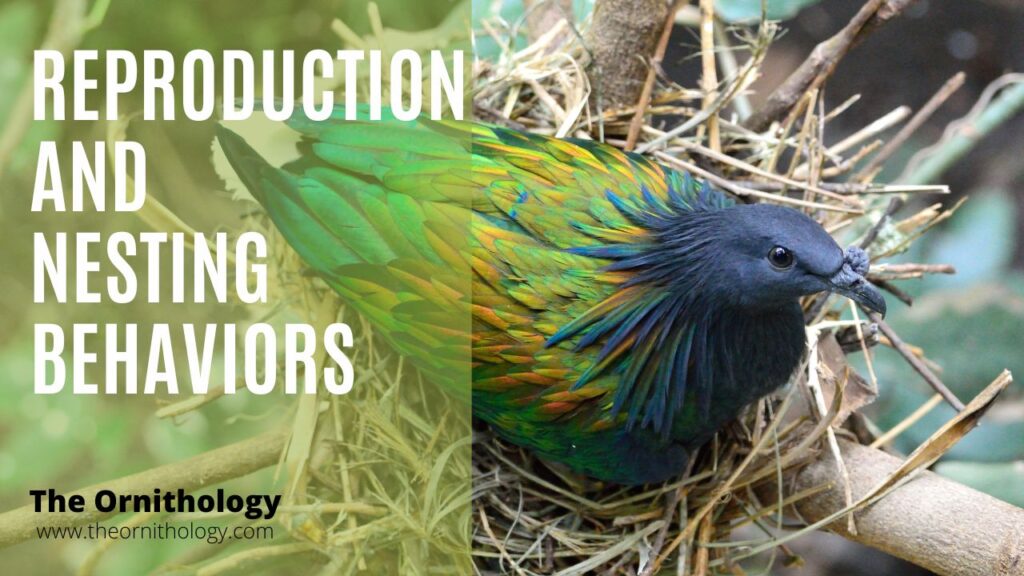Avian Reproductive Anatomy

Understanding avian reproductive anatomy is essential for comprehending the complex process of avian reproduction. Birds have unique reproductive structures and strategies that contribute to their remarkable diversity and reproductive success.
- Ovary and Egg Production: Female birds have a single functional ovary that produces eggs. Unlike mammals, the female reproductive tract includes only one functional ovary, while the other ovary regresses during development.
- Fertilization and Sperm Transfer: During copulation, the male bird transfers sperm to the female’s cloaca. Sperm storage structures in the female’s reproductive tract allow for fertilization to occur even after copulation.
Courtship Displays and Mate Selection
Courtship behaviors and displays are crucial for mate selection and reproductive success. These displays often involve intricate behaviors, vocalizations, and visual cues that signal fitness and compatibility.
- Visual Displays: Many birds engage in visual displays, such as dancing, puffing up feathers, and showing off vibrant plumage. These displays communicate the individual’s health and vitality to potential mates.
- Vocalizations: Songs and calls are significant in mate attraction and communication. Male birds often sing to establish territories, attract females, and warn off rivals.
- Gift-Giving: Some species engage in gift-giving behaviors, where males present females with food or other objects as part of the courtship process.
Nesting Styles and Strategies
Birds employ a wide range of nesting styles and strategies to protect their eggs and rear their young. Nesting behaviors vary depending on factors such as habitat, climate, and species-specific needs.
- Open-Nesting: Many birds build open nests on branches, ledges, or the ground. These nests offer minimal protection but allow for easy access to eggs and chicks.
- Cavity-Nesting: Some birds nest in natural cavities or use holes in trees as sheltered nesting sites. Others take advantage of man-made structures like birdhouses and buildings.
- Ground-Nesting: Ground-nesting birds build their nests on the ground, often using vegetation for cover. These nests are vulnerable to predation and disturbance.
- Colonial Nesting: Some bird species nest in colonies, offering safety in numbers by reducing the chances of individual nests being predated.
- Mound-Building: Birds like the bowerbirds build elaborate structures, known as bowers, to attract mates. These structures are decorated with colorful objects and serve as courtship displays.
Understanding avian reproductive anatomy, courtship displays, and nesting strategies provides insights into the diverse ways birds ensure the survival of their species. The choices birds make in selecting mates and nesting sites contribute to their ecological success and the continuation of their populations.
Frequently Asked Questions (FAQ) – Reproduction and Nesting Behaviors
How do female birds produce eggs?
Female birds have a single functional ovary that produces eggs. The process involves the development of egg cells within the ovary, followed by the release of mature eggs into the reproductive tract.
How does fertilization occur in birds?
Fertilization in birds occurs during copulation, where the male transfers sperm to the female’s cloaca. The female’s reproductive tract has structures that allow for sperm storage, enabling fertilization to take place even after copulation.
What is the purpose of courtship displays in birds?
Courtship displays serve several purposes, including signaling fitness, health, and compatibility to potential mates. These displays establish a strong bond between mates and enhance successful reproduction.
Why do male birds sing during courtship?
Male birds sing to establish territories, attract females, and compete with rival males. Songs convey information about the singer’s quality, health, and ability to provide for potential offspring.
Do all bird species build nests?
While most bird species build nests to protect their eggs and young, some species, like ground-nesting birds, may not construct elaborate nests. They rely on camouflage and other strategies to protect their eggs.
What are some nesting materials birds use?
Birds use a variety of materials to build nests, including twigs, leaves, grass, mud, feathers, and even man-made items like paper and plastic.
How do birds choose nesting sites?
Birds select nesting sites based on factors such as protection from predators, accessibility to food sources, shelter from weather conditions, and camouflage. Different species have specific preferences based on their habitat and nesting strategies.
Why do some birds nest in colonies?
Colonial nesting offers safety in numbers. By nesting together, birds reduce the chances of individual nests being predated. This strategy also provides opportunities for information sharing and protection from predators.
What are the benefits of cavity-nesting for birds?
Cavity-nesting provides protection from predators and harsh weather conditions. Natural cavities or man-made structures like birdhouses offer secure places for birds to rear their young.
How do nesting behaviors vary among bird species?
Nesting behaviors vary due to factors like habitat, climate, and species-specific needs. Different nesting styles and strategies have evolved to ensure the survival of offspring in diverse environments.
